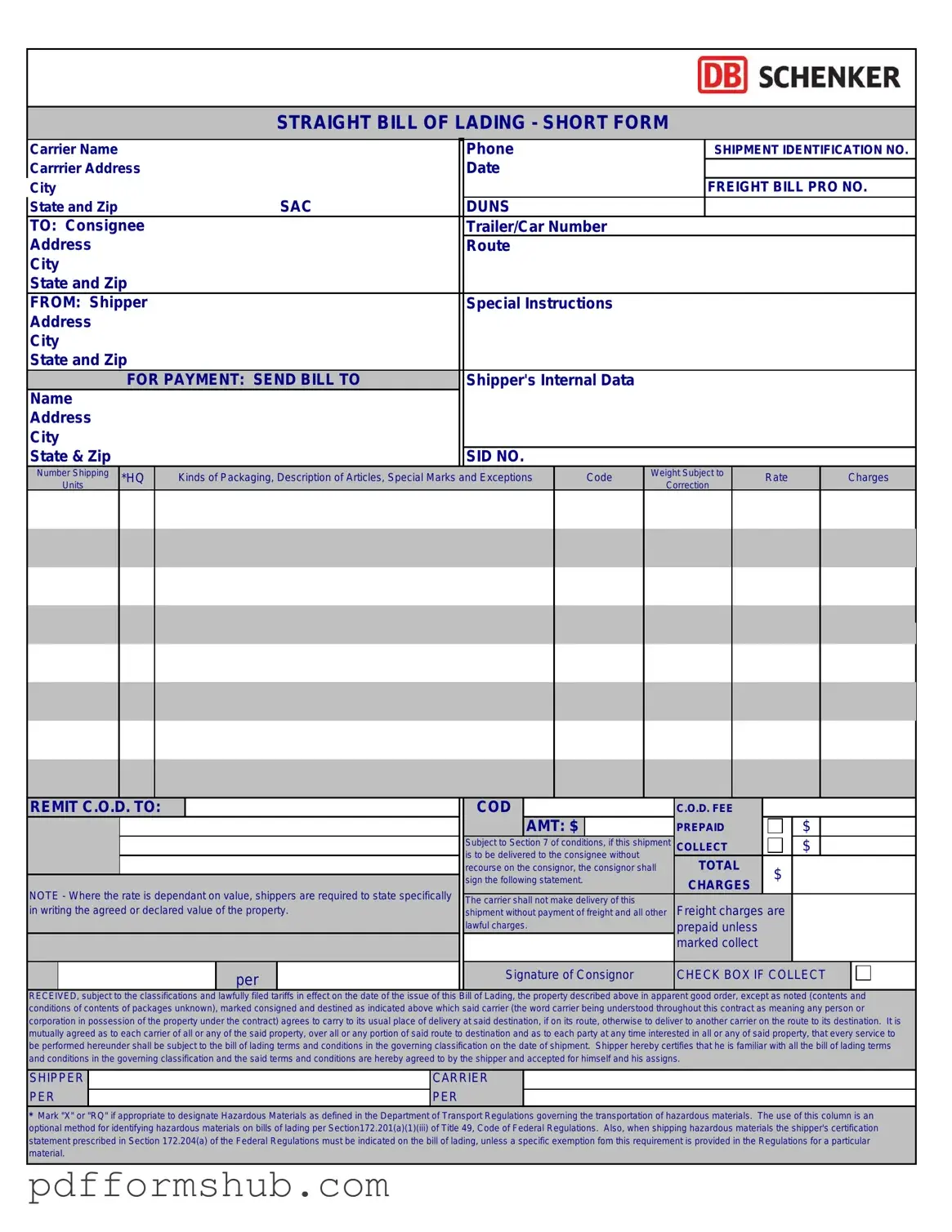The Straight Bill of Lading is a crucial document in the shipping and freight industry, serving as a receipt for goods and a contract between the shipper and the carrier. This form is used when the goods are to be delivered to a specific person or entity, ensuring that only the designated recipient can claim the shipment. It includes important details such as the names and addresses of the shipper and consignee, a description of the goods, and any special instructions for handling. Unlike other types of bills of lading, a Straight Bill of Lading is non-negotiable, meaning it cannot be transferred to another party. This feature adds a layer of security for both the sender and the receiver, as it helps prevent unauthorized claims. Understanding the components and implications of this form is essential for anyone involved in the transportation of goods, whether they are shippers, carriers, or consignees.
